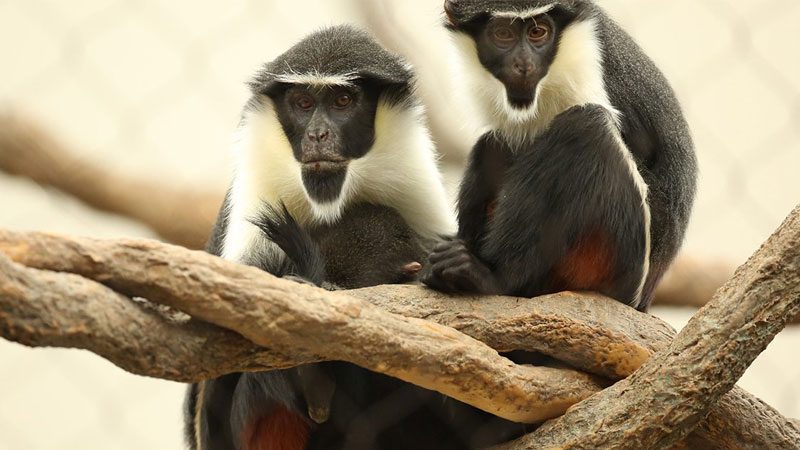Welcome to Lincoln Park Zoo’s new web app! Share your feedback

Diana Monkey
Regenstein African Journey
Did You Know?
- Carl Linnaeus named Diana monkeys for the crescent-shaped band of white hair on their brow. It is said to resemble that of the Roman goddess Diana, who is associated with the moon.
- Diana monkey troops consist of one adult male, many adult females, and their young. Newborn Diana monkeys inherit their mothers’ ranks.
- They are members of a primate group known as guenons. These are African monkeys with slender bodies and long tails, mostly based in forests. Guenons are known for their diversity of hair; different species show distinct patterns of color and length.
Don’t See the Animals?
Why aren’t animals visible at all times? To promote positive animal welfare, we provide animals with choices. They can choose to spend time in areas that are out of public view.

Take an Animal Home with You
Overview
Scientific Name: Cercopithecus diana
Class: Mammals
Diet: Fruit, flowers, leaves, insects, and invertebrates
Range: West Africa
Endangered Status: Endangered
More Information
Diana monkeys have reddish-brown fur from their lower back to their rump, along with rust-colored fur on their inner legs and bright white fur on their throat, chest, forearms, thighs, and forehead. Males can get to around 22 inches long, not including their long tails, and they weigh 11–12 pounds. These primates spend most of their lives in trees, and about one-third of their diet is fruit. Unlike similar species, they move through canopies with all four limbs, instead of leaping or swinging.
They are noisy animals—their alarm calls also alert other species of monkeys in surrounding areas. They are also important seed dispersers in their ecosystems. These monkeys live in groups of 15–20. Breeding takes place seasonally and peaks in July, with a single infant born the following winter. Young Diana monkeys reach maturity at around 3 years of age. Females stay in their mothers’ groups their whole lives, but males leave. Their populations are decreasing due to habitat fragmentation and hunting.
